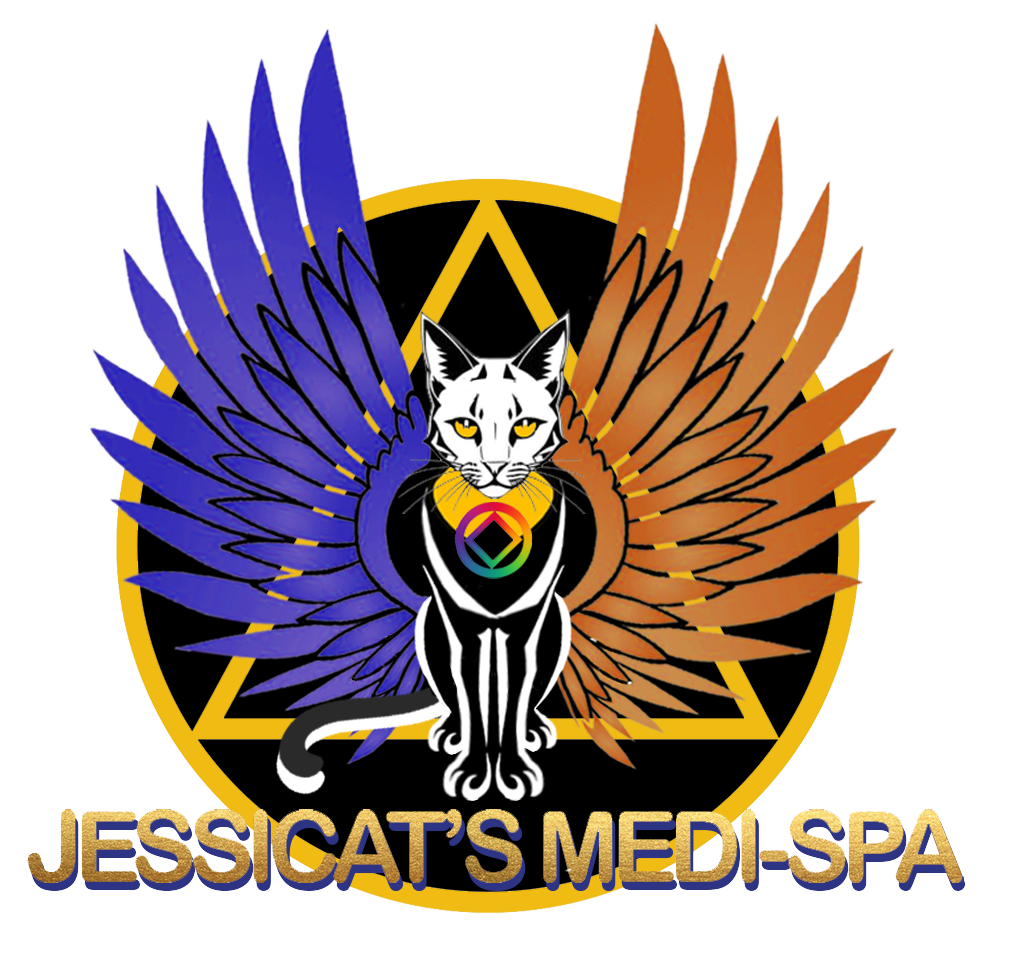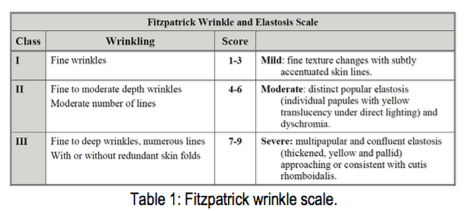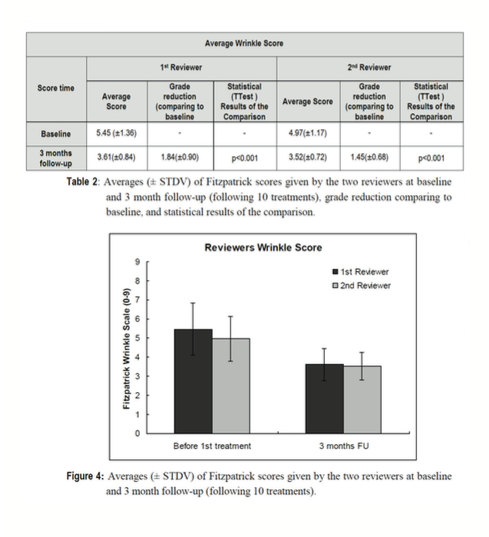Evaluation of Safety and Efficacy of Using Venus Freeze® System for Wrinkles and Rhytides Treatment – a Post Marketing Study
Neil Sadick, MD Clinical Professor, Dermatology – Weill Cornell Medical College*.
INTRODUCTION Patient demand for non-surgical, non-invasive, and no-downtime wrinkle treatment procedures has grown dramatically over the past decade as new treatments and technologies have been introduced. The effects of dermal heating are well recognised to include immediate effects on collagen structure with stimulation of neocollagenesis (1). These changes can help reduce the appearance of fine wrinkles. Radiofrequency (RF) energy is used in medicine for a few decades. Radiofrequency (RF) energy heats tissue through the induction of rotational movement in water molecules. These movements produce heat and in turn affect collagen for wrinkle reduction. Multiple Monopolar and Bipolar RF devices are FDA cleared for non-ablative treatment of wrinkles and rhytides and for skin tightening. Venus Concept has developed the Venus Freeze® system for wrinkles and rhytides treatment. The Venus Freeze® system incorporates a power supply, RF generator, a computer controller and treatment handpieces. The applicator controls the heating of one or more target tissues (epidermis, dermis and hypodermis). While treating wrinkles and rhytides, the treatment creates enough thermal effect to induce collagen remodeling with no ablative thermal damage of the epidermis or dermis. A post-marketing study was conducted in order to evaluate the efficacy and safety of the Venus Freeze® system, an innovative system intended for wrinkles treatment. Altogether, 31 subjects participated in the study. Subjects were treated for facial wrinkles and followed for 3 months following last treatment. In order to evaluate treatment efficacy, pre and post treatment photos were introduced to two uninvolved physicians for blinded evaluation. The following report describes the cumulative results of this study.
PATIENTS AND METHODS All 31 patients, (1 male, 30 female), ages 36-62 years (average 49.23±7.17), were enrolled in the study after meeting all inclusion/exclusion criteria and providing signed Informed Consent Form. The patients’ skin wrinkles were classified according to Fitzpatrick Wrinkle Scale(2). Table 1 presents the Fitzpatrick Wrinkle Scale. All 31 patients were treated for face wrinkles and rhytides. Patients received 10 treatments – the first four treatments were performed twice weekly, the 5th-10th treatments were performed once a week. Subjects were scheduled for two follow up visits – 1 month and 3 months following last treatment. Prior to the RF treatment – the treated areas were assessed visually as to skin relevant parameters and photographed in a standardized method using high-resolution digital photography in order to allow comparison and assessment of wrinkle appearance improvement following treatment. Photographs were taken prior to each treatment.
The treatment area was cleaned thoroughly with soap and water. The skin surface was dried prior to the treatment. Treatment parameters were determined by the operator and were based on patient skin type and area of treatment. The following parameters were chosen:
- Treatment time (min)
- Output Energy (Watt)
Immediately after the treatment the treated area was visually assessed for skin responses, including edema, erythema, hypopigmentation, hyperpigmentation, and textural changes.
In addition, patients were asked to rate the pain level which they felt during the treatment by using analogue pain scale. The study’s efficacy endpoint was considered by pre-treatment photographs (baseline) that were assessed and graded by two physicians blinded to the study and the patients.
Assessment was conducted by using Fitzpatrick wrinkle scale. Any wrinkle score improvement (downgrade score) following treatment, relatively to pre-treatment wrinkle (baseline) score, was considered a success.
The safety of the procedure was also evaluated by monitoring the occurrence of potential procedure-related side effects.
Patients were asked to evaluate the degree of pain during treatment. In addition, treated areas were visually assessed for skin responses, including edema, erythema, hypopigmentation, hyperpigmentation, and textural changes following each treatment.
RESULTS
All 31 patients completed the course of the 10 treatments and 3 months follow-up protocol.
- No unexpected adverse side effects were detected or reported.
- In some patients, post-treatment edema (hyperemia) was detected. The edema was resolved within 10 to 30 minutes.
- No patients experienced burns, skin breakdown, or scarring.
- None of the patients has reported pain during the study.
- All patients (100%) were satisfied with
treatment results
The following sets of before and after photographs (Figure 1, 2, 3 and 4) illustrate the significant beneficial effect achieved by the Venus Freeze® System.
Photographic analysis of pre-and post-treatment of the digital images was conducted by a board certified dermatologist and a board certified plastic surgeon.
Analysis revealed improvement downgrade of at list 1 score according to the Fitzpatrick scale in almost all (96.7%) patients according to both reviewers. Statistical comparison (using paired T-Test) was conducted among the pre- treatment Fitzpatrick score (baseline) to Fitzpatrick score obtained at the 3 months follow-up (following 10 treatments) for each reviewer.
Statistical analysis was conducted by SAS (9.1). Score differences were found to be statistically significant while comparing baseline score to the scores obtained at 3 months follow-up (p<0.001) for both reviewers, indicating treatment efficacy. Table 2 and Figure 4 represent averages (± STDV) of Fitzpatrick scores given by the two reviewers at baseline and 3 months follow-up. These results may indicate that the treatments have initiated collagen remodeling process that continues after treatment session has been completed.
All 31 patients participating in the study reported no pain during the treatment.
DISCUSSION AND CONCLUSIONS
Thirty-one patients were treated for face wrinkle reduction and followed for 3 months following last treatment. In order to evaluate treatment efficacy, pre and post treatment photos were introduced to two uninvolved physicians for blinded evaluation.
The data reported in this study demonstrate that Venus Freeze® device offers a safe and effective noninvasive technique to improve the appearance of age-related rhytides and wrinkles.
The clinical results of nonablative RF anti-wrinkle effects were first reported in the periorbital area(3). In this multicenter study, Fitzpatrick and his colleagues demonstrated clinical improvement in periorbital rhytides in 80% of subjects. In contrast, in 24 patients who underwent a single RF treatment to improve the upper third of the face, only 36% of the patients’ self-assessment reported improvement (4) .
In this study, statistical analysis has revealed improvement (downgrade of at list 1 score according to the Fitzpatrick scale) in almost all (96.7%) patients according to both reviewers.
Analysis of study results has revealed statistical significance while comparing baseline score to the scores obtained at 3 months follow-up, following 10 treatments for both reviewers, indicating treatment efficacy.
In a similar device, it has been reported that the use of an RF device was associated with significant pain, and in a small but significant number of cases, subcutaneous fat atrophy developed (5). No subcutaneous fat atrophy was noted in this study.
All patients participating in the study have reported no pain during treatment, although the procedure was performed without using any anesthetic agents. Furthermore, no patients considered the procedure intolerable at any session.
The results of this study clearly indicate that this innovative RF system offers a non-invasive, effective, safe and virtually painless wrinkle reduction treatment.
In conclusion, the data reported in this study support the safety and effectiveness of the Venus Freeze® System for wrinkle and rhytides treatment.
REFERENCES
1. Sadick N, Sorhaindo L. The radiofrequency frontier: a review of radiofrequency and combined radio-frequency pulsed light technology in aesthetic medicine. Facial Plast Surg 2005;21: 131–8.
2. Goldman p & Fitzpatrick E: Cutaneous Laser Surgery – the art and science of selective photothermolysis page 377; Mosby 1999.
3. Fitzpatrick R, Geronemus R, Goldberg D, et al; Multicenter study of noninvasive, radiofrequency for periorbital tissue tightening. Lasers Surg Med 2003;33:232–42.4. Bassichis BA, Dayan S, Thomas JR; Use of Nonablative radiofrequency device to rejuvenate the upper one-third of the face. Otolaryngol Head Neck Surg 2004;130: 397– 406.
5. Biesnman BS. Radiofrequency Devices: Monopolar vs bipolar vs radiofrequency plus laser; indications; treatment approaches; novel applications; results. In: Arndt KA, Dover JS, Anderson RR, editors. Controversies and Conversations in Laser and Cosmetic Surgery. Symposium Proceedings; 2005, Denver, CO.
* Study was not physically conducted at the Weill Cornell Medical College



